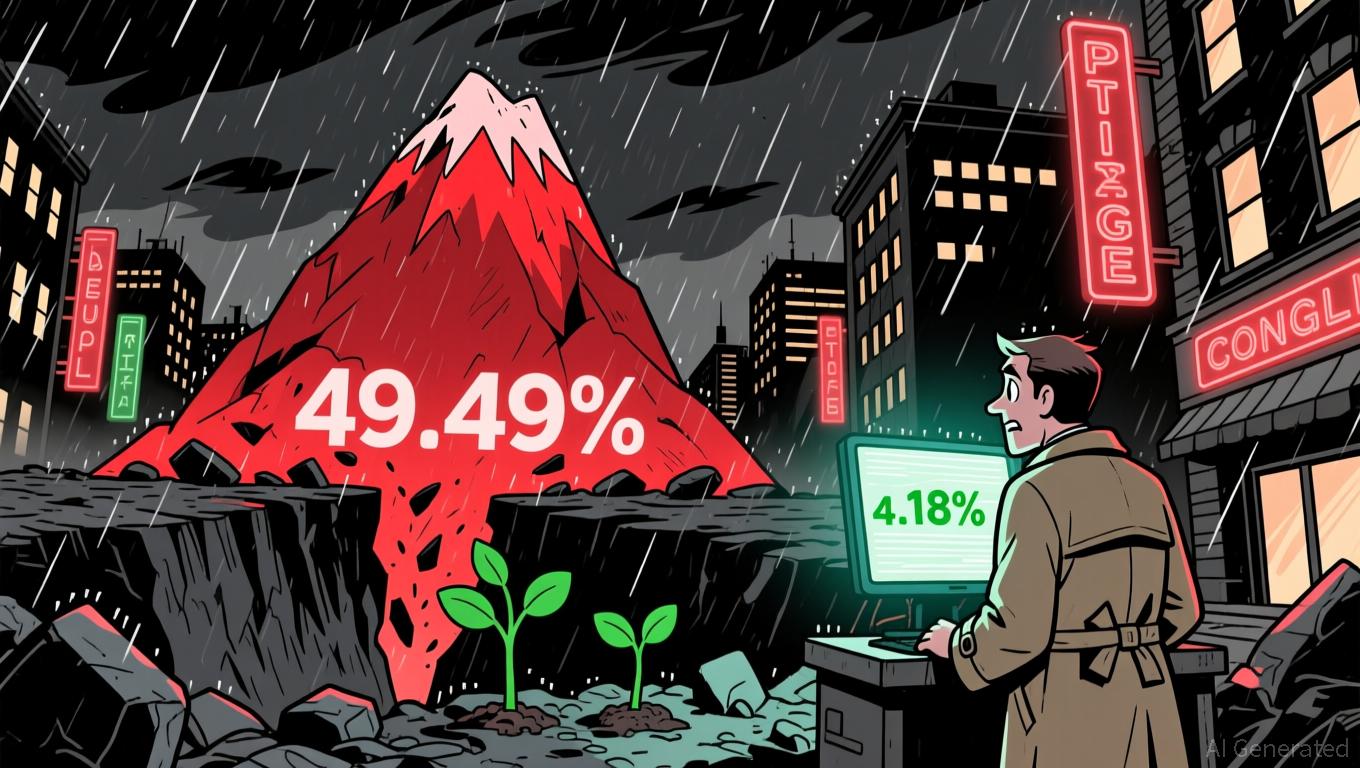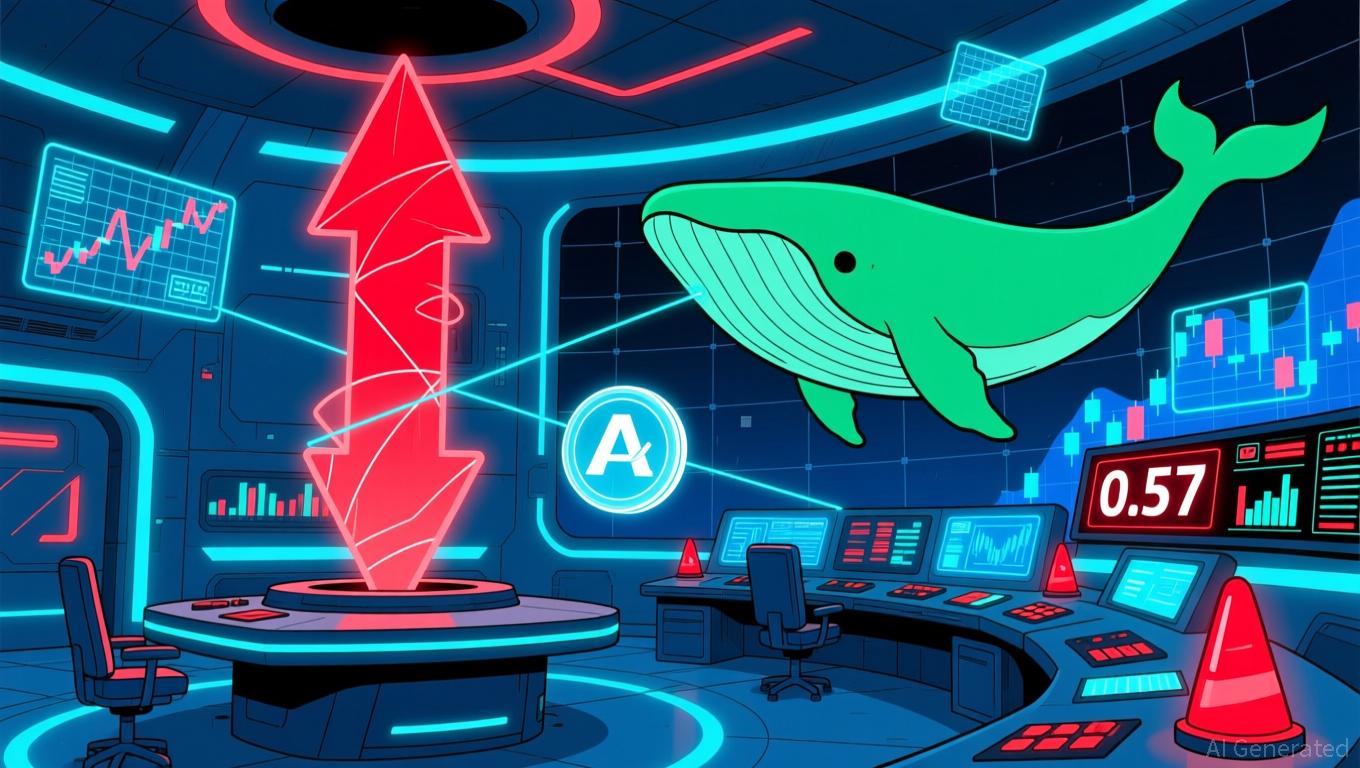Why the COAI Index Is Plummeting in November 2025: Governance Failures and Regulatory Ambiguity Despite AI Industry Strength
- COAI Index, tracking AI crypto projects, fell 88% in 2025 due to governance failures, regulatory ambiguity, and market sentiment shifts. - C3.ai's leadership turmoil, $116.8M Q1 loss, and class-action lawsuit eroded trust, dragging down the index as its core component. - The CLARITY Act's vague definitions of AI crypto assets created legal uncertainty, deterring institutional investors and amplifying volatility. - Unlike COAI, traditional AI equities (Microsoft, Nvidia) showed resilience with strong fund
Leadership Turmoil and Governance Issues at C3.ai
Central to the COAI Index’s downfall is C3.ai, its main component. The company has faced significant leadership instability, including a CEO change and a class-action lawsuit alleging that executives misled shareholders, which has severely undermined trust
The legal action, which
Regulatory Uncertainty and the CLARITY Act
The situation has been worsened by unclear regulations. The CLARITY Act,
This lack of regulatory clarity has hit the COAI Index especially hard, as it depends on a stable legal environment to attract funding. In comparison, established AI companies like Microsoft and Nvidia, with their proven business models and compliance systems, have managed to withstand the uncertainty more effectively
Comparing to the Broader AI Market

Third-quarter 2025 data further demonstrates the resilience of AI-related stocks. Presight AI Holding
Investor Sentiment and the Overreaction Argument
The 88% plunge in the COAI Index prompts debate about whether the market has gone too far. While governance and regulatory issues are significant, the fundamental appetite for AI innovation is still robust. Large investors are reallocating funds to more stable technology stocks like Cisco, but this does not diminish the long-term outlook for AI-focused initiatives
The argument that the market has overreacted is further supported by the fact that 84% of C3.ai’s Q1 2025 revenue was generated from recurring subscription services, pointing to a resilient business model
Conclusion
The COAI Index’s sharp decline in November 2025 is the result of governance lapses, regulatory confusion, and changing investor attitudes. While the broader AI industry continues to perform well due to solid fundamentals, the crypto AI segment remains exposed to overvaluation and governance pitfalls. For investors, the key is to separate sector-specific turmoil from the lasting potential of AI innovation. The current downturn could offer opportunities for those prepared to manage the risks, provided the sector can resolve its governance and regulatory issues.
Disclaimer: The content of this article solely reflects the author's opinion and does not represent the platform in any capacity. This article is not intended to serve as a reference for making investment decisions.
You may also like
ALGO Falls 1.74% as 1-Month Results Remain Subdued
- Algorand (ALGO) dropped 1.74% on Nov 24, 2025, extending its 1-month decline to 20.35% amid sustained bearish sentiment. - The token’s annual price has fallen 57.76% from its peak, driven by macroeconomic volatility and uncertainty over potential interest rate cuts. - No ALGO-specific news or on-chain developments were reported, with price movements linked to broader economic factors and risk appetite shifts. - Analysts warn the bearish trend may persist unless major upgrades emerge, urging investors to

DOGE drops 53.85% over the past year after early dissolution of federal agency
- Trump's DOGE department, aimed at cutting federal spending, was disbanded early, with functions absorbed by OPM. - DOGE's aggressive cost-cutting, including $1.9B in canceled contracts, faced scrutiny over lack of transparency and legal concerns. - The DOGE cryptocurrency token fell 53.85% in a year, while Grayscale launched spot ETFs as the department dissolved. - Former DOGE staff now hold federal roles, but its legacy raises ongoing questions about executive authority in reform efforts.

YFI Value Increases by 1.18% During Market Fluctuations
- YFI rose 1.18% in 24 hours to $4,036 but fell 49.49% annually, highlighting extreme volatility. - Short-term gains lack clear catalysts, with analysts noting broader market dynamics drive fluctuations. - Long-term bearish trends persist despite temporary rebounds, urging caution amid macroeconomic pressures.

Aave News Today: The Two Sides of DeFi: Aave's Expansion Increases Volatility Concerns
- Aave's AAVE token faces volatility risks near 0.57 support level, with whale accumulation and leveraged positions amplifying short-term instability. - A major Aave whale added 24,000 AAVE tokens (total 276,000) at $165 average cost, but remains vulnerable to repeat October 11 liquidation risks. - A $80M WBTC long position on Aave approaches $65,436 liquidation threshold, threatening forced selling and downward price pressure. - Tangem's Aave-integrated stablecoin yield feature highlights protocol's DeFi
